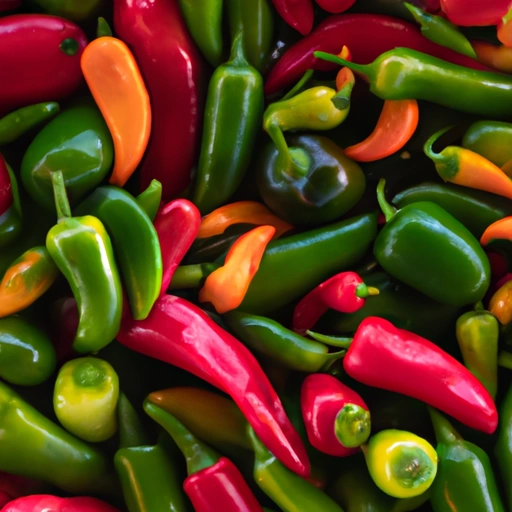Chile Pepper
Description

Chile peppers are a beloved ingredient that add heat and depth of flavor to dishes around the globe. From the fiery habanero to the mild bell pepper, these versatile fruits come from the Capsicum genus and have been cultivated for thousands of years. Available in a range of colors, shapes, and sizes, chile peppers can be used fresh, dried, powdered, or as a paste, adding complexity to a multitude of culinary creations.
Common uses
Chile peppers are commonly used to add heat and flavor to sauces, stews, marinades, and spice blends. They are also pickled, roasted, or stuffed for various appetizers and entrees. In their dried form, chiles contribute to spice rubs and are rehydrated for use in sauces like the classic Mexican mole.
Nutritional value
Calories
Average-sized raw chile pepper (45g): approximately 18 kcal (75 kJ).
Protein
Chile peppers typically contain about 0.9 grams of protein per average-sized pepper.
Fat
Chile peppers have a low fat content, with only about 0.2 grams per pepper.
Carbohydrates
An average-sized chile pepper contains about 4 grams of carbohydrates.
Vitamins
Chile peppers are rich in Vitamin C, with a single pepper providing up to 240% of the daily recommended intake. They also contain Vitamin B6, Vitamin K1, and Vitamin A.
Minerals
These peppers are a source of potassium, manganese, and copper.
Health benefits
Chile peppers are known for their capsaicin content, which can boost metabolism and aid in pain relief. Their high Vitamin C content supports the immune system, and other antioxidants may help reduce the risk of chronic diseases.
Potential risks
While chile peppers offer health benefits, they can also cause digestive irritation in some individuals, and capsaicin can lead to a burning sensation if not handled properly. Excessive consumption may lead to various health issues for those sensitive to spicy foods.
Common recipes
Chile peppers are staples in recipes like Mexican salsas, Indian curries, Thai soups, and Chinese stir-fries. They are also key ingredients in hot sauces and chili con carne.
Cooking methods
Chile peppers can be sautéed, roasted, grilled, or simmered. Dried chiles are often toasted to enhance their flavor before being ground or rehydrated.
Pairing with other ingredients
These peppers pair well with a variety of ingredients, including chocolate, lime, garlic, tomatoes, and meats.
Summary
Chile peppers are a diverse and popular ingredient with a rich history and wide range of culinary applications. They offer significant health benefits and can be incorporated into many different recipes to add flavor and heat. Despite their potential risks, chiles continue to be a staple in kitchens across the world.